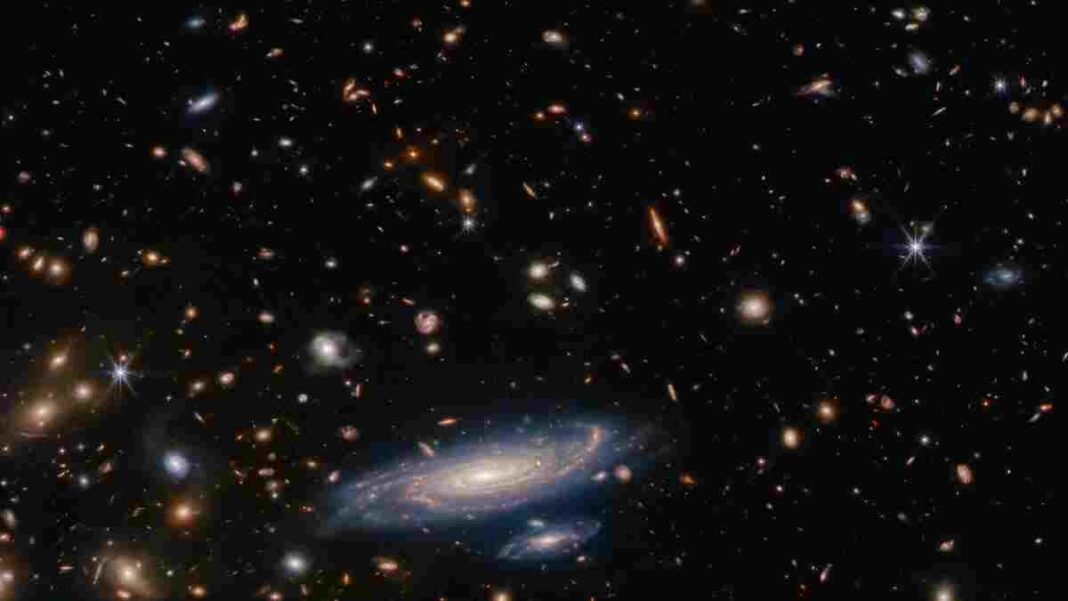UNITED STATES: This dense field of galaxies has been photographed by the James Webb Space Telescope as it is operating at Lagrange Point 2 of the Sun-Earth system.
The picture is full of Webb’s signature six-pointed diffraction spikes, and the giant spiral galaxy at the bottom of the picture is surrounded by a lot of smaller, farther-away spiral galaxies.
A little more than a billion light-years from Earth, in the constellation of Hercules, lies a massive spiral galaxy known as LEDA 2046648.
Researchers say that one of Webb’s main scientific goals is to look at distant galaxies in the early universe to learn more about how they formed, how they changed over time, and what they are made of.
Webb’s capacity to unearth galactic “fossils” was put to the test with the aid of the image, which was taken during instrument calibration. According to NASA, because old galaxies are so far away, and as space expands, their light has shifted into infrared wavelengths, which is Webb’s area of expertise.
The most powerful observatory in the world is also ready to study the chemical makeup of thousands of galaxies. This will help scientists figure out how heavy metals were made and gathered as galaxies evolved.
“Due to the light’s redshift toward infrared wavelengths from these far-off galaxies, Webb’s superb infrared vision allows the telescope to look back in time. Astronomers will be able to better comprehend the evolution of galaxies by comparing these systems to galaxies in the nearby universe,” according to a statement from NASA.
As part of the commissioning effort, the picture was taken by Webb’s near-infrared camera (NIRCam). While NIRISS was tracking the well-known white dwarf star WD1657+343, NIRCam took this galaxy-filled image.
The deepest, coldest ice ever measured in the universe had just undergone an extensive study by the flying observatory.
The examination found everything from the most basic complex organic molecule, methanol, through carbonyl sulphide, ammonia, and methane in the ice, making it the most thorough census of the icy components available to create future generations of stars and planets.
Also Read: NASA’s Ingenuity Mars Helicopter Takes to the Skies for 41st flight



